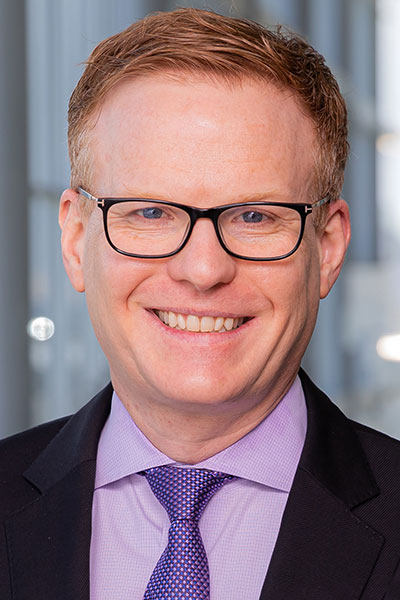
Interstitial lung disease (ILD) has emerged as a major concern for patients who have survived COVID-19, particularly among those who were hospitalized. Some patients fare well after discharge, some need a lung transplant, and most fall somewhere in between.
“We are all concerned about what happens to patients after they survive COVID in the hospital,” said Corey Kershaw, MD, FCCP, professor of pulmonary and critical care medicine at The University of Texas Southwestern Medical Center. “Do I have to worry about them developing a horrendous fibrosing lung disease? Who do I have to worry about; what’s their prognosis? When do I call my lung transplant colleagues and say ‘I have someone who survived COVID and now their lungs are wrecked?’”
Dr. Kershaw will moderate a panel discussion on Interstitial Lung Disease After COVID-19 – Insights Into Incidence, Prognosis, and Management, on Monday, October 17, from 9:15 AM – 10:15 AM CT, in Room 104DE. He will be joined by Anna Podolanczuk, MD, pulmonary-critical care specialist and assistant professor of medicine at Weill Cornell Medical College, and Harpreet Grewal, MD, assistant professor of pulmonology and critical care medicine, Columbia University Irving Medical Center. The trio will explore evolving prognostic and treatment approaches for patients with post-COVID conditions who have persistent radiographic and clinical abnormalities.
“We have come through the horrors of 2020 and 2021 when so many people were dying in hospital,” Dr. Kershaw said. “We have ways to treat severe COVID in the hospital and a lot more people are surviving and going home. The struggle is that so many of these patients don’t have clear, objective reasons for why they still feel so terrible and short of breath weeks, months, 2 years later. The inpatient crisis may be receding, but we still have a lot of work to do to help these people.”
COVID survivors seem to fall into two large groups, Dr. Kershaw said. Some patients have clinical symptoms such as persistent coughing or shortness of breath and no objective findings. Others have clear lung abnormalities on CT scan or other imaging, regardless of their clinical complaints.
Patients who had more severe COVID, were on ventilators, and are older are at greater risk for more severe ILD, Dr. Kershaw noted. There are data from the United Kingdom showing objective and self-reported improvement after high-dose steroids, but it is not clear which patients are more likely to benefit.
Nor is it clear which patients are more likely to benefit from antifibrotic medications.
“I’m not sure there are good answers to when should I start something like nintedanib or pirfenidone,” Dr. Kershaw said. “We all have our own answers because we just don’t know the natural history of a post-COVID survivor who has a CT scan abnormality. That makes it hard to know when, or how, or even if, to treat.”
There are good parallels with patients who survived acute respiratory distress syndrome (ARDS) and good long-term outcomes data. There are also important differences.
“The mechanism is probably different in ARDS versus severe COVID, but ARDS patients are usually okay at 5 years,” he said. “Some of them don’t feel perfect, there may still be a physical disability, but their lungs often are not devastated by progressive fibrosis. We are hoping that COVID lung injuries follow a similar course, but we don’t know. We did a great job in the hospital, now let’s start figuring out how to take care of this massive new population of patients who came through COVID hell in the hospital. We are seeing these people in our clinics every day.”
Join us at CHEST 2025
Save the date for the next Annual Meeting, October 19 to 22, 2025, in Chicago. CHEST 2025 will explore the latest advancements in pulmonary, critical care, and sleep medicine, with a focus on innovation and the future, just as the city itself embodies progress and reinvention.





